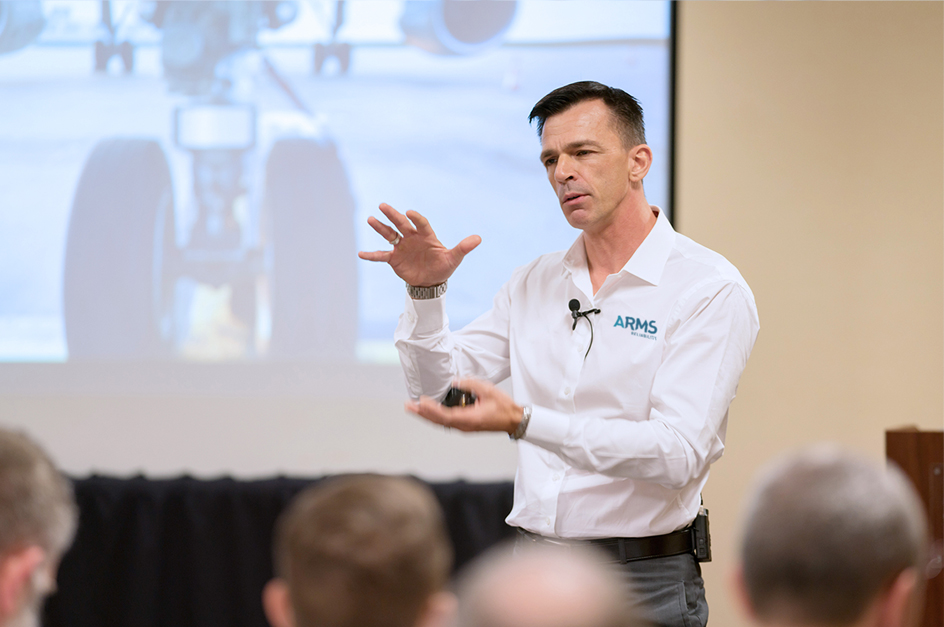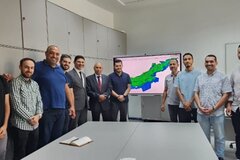Jason Apps, CEO of ARMS Reliability now part of Baker Hughes, is leading a team focused on making reliability a reality for customers globally.
Industrial asset management is a holistic approach to safe, reliable, compliant management of an organization’s operating and fixed assets. It could be trucks or turbines for example, from conception and design, through to operations and disposal. It is a best-in-class approach in the operational phase, structured to achieve the maximum performance from an operator’s assets, at the lowest cost and within an acceptable risk profile.
That is the result everyone wants, and it can only be achieved through a holistic approach to asset performance management, combining technology with an effective process, support services and insightful asset data.

Traditional asset management is quite static. Maintenance plans are developed for every new asset and those plans remain in place forevermore, meaning the same work is carried out regardless of any changes to how that asset is used.
Essentially, what we do is help our customers ensure the maintenance work they are carrying out on their assets is the most appropriate at all times. This involves putting a process and technology in place to ensure maintenance plans are always optimized, even as assets or operating conditions change.
Combined with Bently Nevada’s deep asset condition monitoring expertise and solutions, this creates a truly holistic platform, setting ourselves apart from other such providers.
What we provide is not really a product but a solution. It involves a technical platform that supports an ongoing process and improves the productivity of people and resources. It is the combination of the right process, technical solution, support and content that delivers a significant improvement in asset performance.
The most common objective of our customers is to improve performance while controlling costs and managing risk exposure. To deliver these connected outcomes requires the right asset and process expertise, supported by connected technical solutions that can leverage reliability strategy blueprints.

Most of the people we are engaging with right now are those who recognize how critical it is to control and manage asset performance. Typically, they are in asset intensive industries like oil and gas or mining, where the cost of production is high and the risk of significant failure is very real.
Let me give you a recent example. We completed a maintenance strategy optimization project for a large North American LNG Producer, with projected cost savings of over $130 million over the next decade for the company. This includes spare parts, labor and financial effects, as well as the implementation of recommended performance management tasks for the valves in each system.
Through our preventive-maintenance optimization study, we identified 265 potential equipment failure modes – 144 for fin fans, 105 for turbines, and 16 for pumps. Our team then provided a list of new or improved preventive-maintenance tasks designed to help the company avoid asset failures and unplanned shutdowns in the future. It is a very detailed and actionable plan.
Some operators have come to us after digitizing their maintenance plans and realizing that digitization alone will not deliver the results they need. They must first tackle the foundational elements of asset management and establish a process to ensure that maintenance plans are kept up to date.
The performance improvement that customers get with our solution increases as it is applied to assets across their organization and ultimately becomes business as usual. In some cases, reactive maintenance costs are reduced by as much as 50%, while improving availability and capacity.
I’m excited for two reasons. The first, is the connection between ARMS Reliability’s asset health monitoring and the asset protection capabilities offered by Bently Nevada. Combining these two offerings will create more opportunities to help customers extend the life of their assets and reduce non-productive downtime through an integrated offering.
The second reason is that we are committed to helping customers extract the most value from their investments, leveraging our deep technical expertise and related experience to advise customers on how they can optimize asset performance.
It is definitely a relationship where one plus one equals more than two.
Energy Forward Stories
Sign up to stay up to date on the latest innovations and people shaping the future of our industry.




